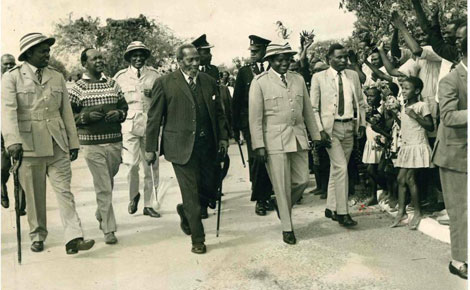×
The Standard e-Paper
Home To Bold Columnists
 |
| Coast Provincial Commissioner Eliud Mahihu walks with Jomo Kenyatta on his arrival in Coast in December 1970. [PHOTO: FILE/STANDARD] |
When Dr Eric Mngola announced that President Mzee Jomo Kenyatta had died at around 2.30am at State House Mombasa, he triggered off a series of chain reaction which thrust a Kenya Police inspector into extra-ordinary circumstances.
Today, 36 years later, Uhuru Kenyatta will for the first time lay a wreath on his father's grave as the commander-in-chief of the Kenya Defence Forces and the President of Kenya.